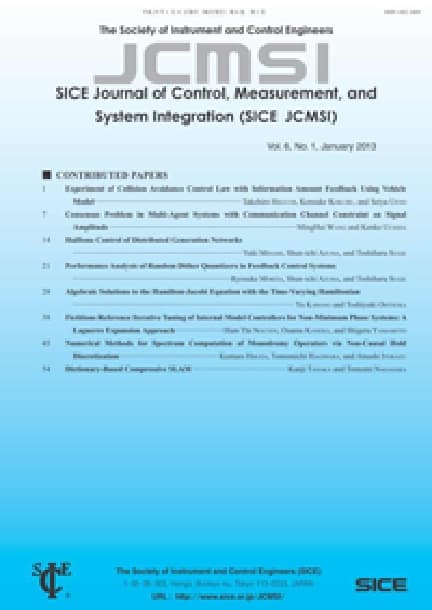Optimal Coordination and Control of Connected and Automated Vehicles at Intersections via Mixed Integer Linear Programming
Mohamad HAFIZULAZWAN MOHAMAD NOR, Toru NAMERIKAWA
pp. 215-222
DOI:
10.9746/jcmsi.12.215Abstract
This paper addresses the crossing order problem for connected and automated vehicles at an intersection where the problem can lead to higher traffic congestion, especially in high traffic density. First, we formulated the problem with mixed integer linear programming where the solution yields optimal crossing time for each vehicle to cross the intersection. Then, we present an optimization framework to drive each vehicle towards the assigned crossing time while conserving the fuel consumption. Finally, we simulate the intersection scenario with the proposed solution, where it is shown that both congestion and fuel consumption can be reduced significantly.









